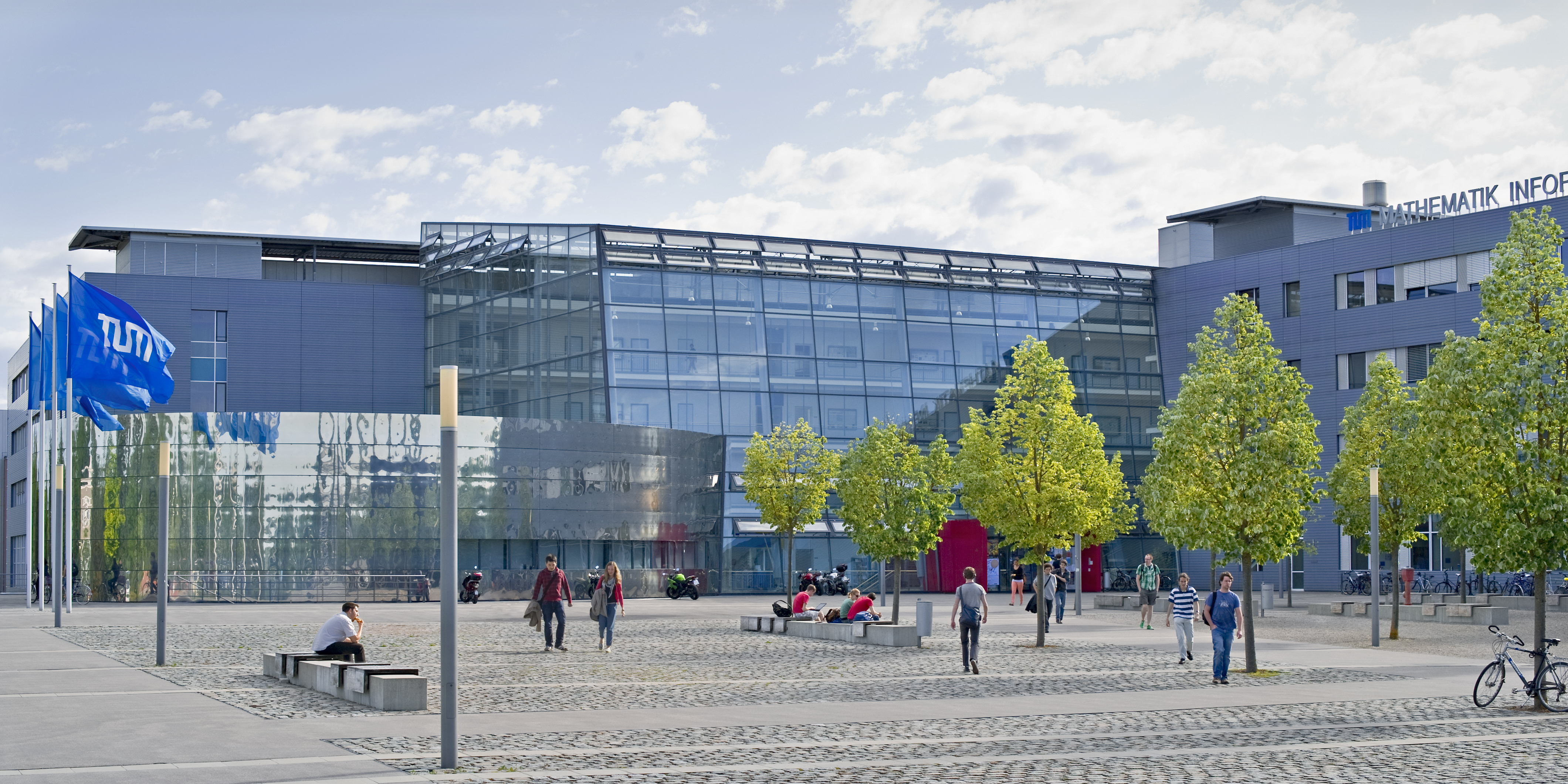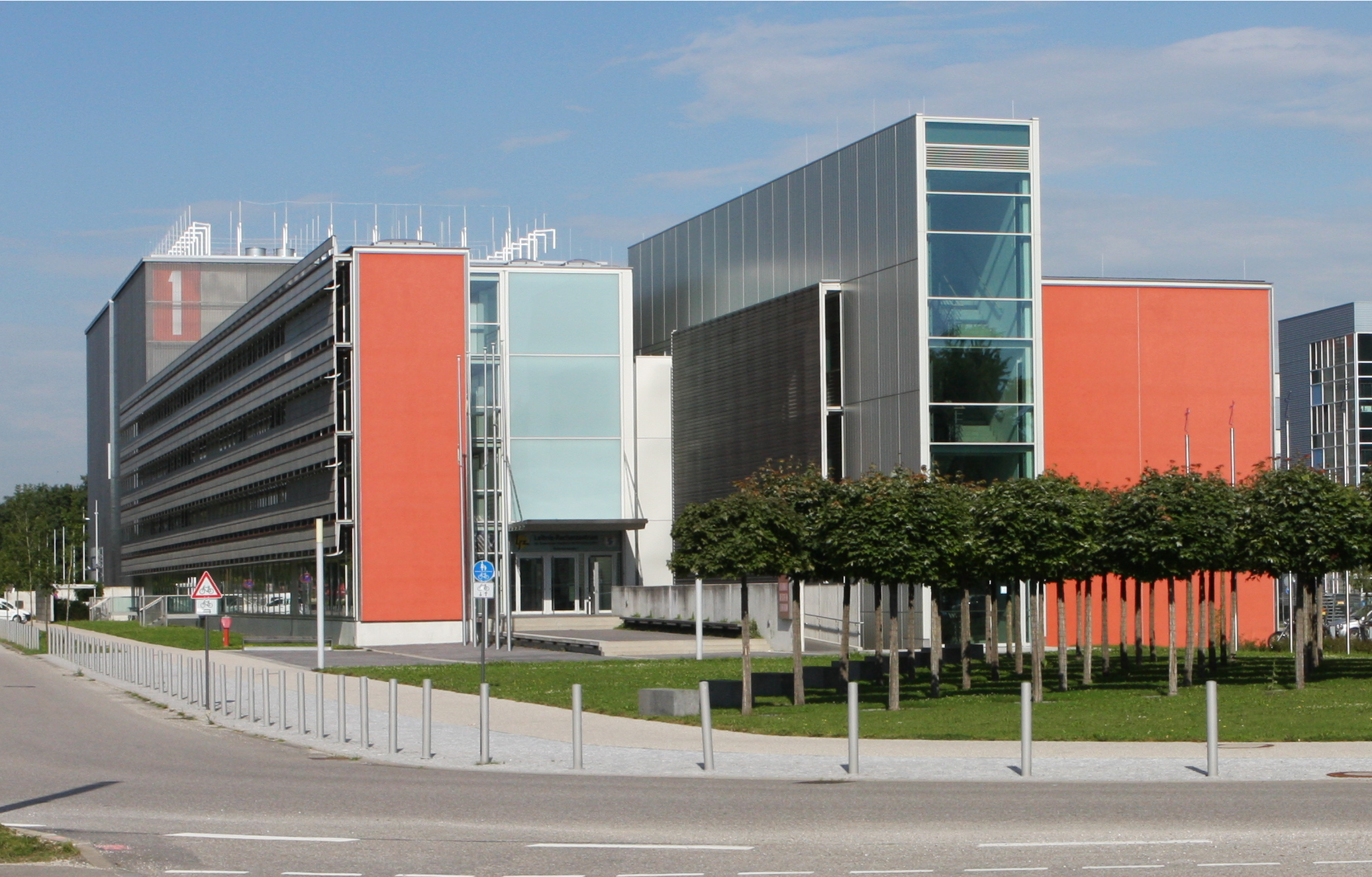Summer School 2017: Phase Field Models
Monday, 31. July to Friday, 4. August 2017
Organised and funded by ISAM, TopMath and the IGDK 1754.
 Foto: Astrid Eckert - Photographie
Foto: Astrid Eckert - Photographie
Invited Speakers, Titles and Abstracts:
Dirk Blömker (University of Augsburg): Stochastic interface motion and slow manifoldsPatrick Dondl (University of Freiburg): Sharp Interface Limits of Phase Field Models
Britta Nestler (KIT): Fundamentals of Phase-Field Modelling for HPC Systems and Coupling with Continuum Mechanics
Robert Nürnberg (Imperial College, London): Numerical Approximation of Phasefield Models
Dirk Blömker: Stochastic interface motion and slow manifolds
In the four lectures we present the theory of slow motion of interfaces and thus of metastable behavior, in stochastic models of phase separation like Allen-Cahn or Cahn-Hilliard. We mainly limit ourselves to the one-dimensional case and study the motion of kinks described by stochastic ordinary equations (SDEs) for their position. In higher dimension we need to study the theory of free boundary problems for the interfaces, which up to now yields to many unsolved problems. In the first part we give a brief introduction to the theory of stochastic partial differential equations (SPDEs) with additive noise. This is based on the mild formulation using the semigroup approach, path-wise fixed-point arguments, and a-priori estimates. In a second part we discuss the theory of slow manifolds for the motion of interfaces. We discuss briefly how to construct such a manifold for 1D Allen-Cahn and 1D Cahn-Hilliard. A crucial point for the dynamics is the spectral theory for the operator linearized around an element of the slow manifold. In the final part we discuss the dynamics of interfaces, where we need two key ingredients. First we present the derivation of the effective equation for the motion of the interfaces. The second result is the stability of the slow manifold. Both results are discussed in the deterministic as well as in the stochastic case.Patrick Dondl: Sharp Interface Limits of Phase Field Models
1) Spaces of Bounded Variation and other preliminaries 2) Gamma-Convergence of the Modica-Mortola Functional 3) Convergence of solutions to the Allen-Cahn equation to Mean Curvature Flow (I) 4a) Convergence of solutions to the Allen-Cahn equation to Mean Curvature Flow (II) 4b) An outlook to higher and fractional order models After discussing some preliminaries, like properties of functions of bounded variation and sets of finite perimeter as well as the basics of the theory of Gamma-convergence, we will derive the classical result by Modica and Mortola. This result shows that, after rescaling, the sharp-interface limit of the the phase field energy by Cahn and Hilliard is given by the perimeter functional. We will then turn our attention to the gradient flow and consider convergence of solutions of Allen-Cahn equation to solutions of mean curvature flow. Finally, we will study both higher order versions of the Modica-Mortola functional (yielding a phase field approximation of Willmores energy) as well as lower order versions (yielding non-local perimeter functionals in the limit).Britta Nestler: Fundamentals of Phase-Field Modelling for HPC Systems and Coupling with Continuum Mechanics
The fundamentals of phase-field modelling, its efficient implementation on HPC systems and the extension of the method to enable coupling with continuum mechanical methods will be presented in two lecture units. In an introductory lecture, the base equations and energy contributions of the phase-field model will be formulated, and the relation to thermodynamic energies will be shown. The equations of motion will be derived and numerical solution methods will be described. For an efficient use of high-performance computers, optimisations of the methods will furthermore be discussed. The first lecture will finish with a selection of applications from fields such as solidification, the formation of grain structures, wetting and cellular structures. The second lecture will focus on the coupling of phase-field modelling with mechanical balance equations. The fundamental balance equations and the fulfilment of the mechanical jump conditions with phase-field modelling will be discussed, and the mechanical driving forces for a phase transformation will be derived. The lecture will finish with examples of stress propagation in microstructures, stress induced phase transformations and crack formations. The course will be accompanied by a computer-assisted internship, which will be taught in blocks. To solve the phase-field equations, a C programme will be provided during the internship. The participants will receive an introduction to the use of the programme and into its modification and extension. The individual contributions of the phase-field model will be tested in an exercise. After initial experiences with the solver, extensions of the basic model such as the consideration of anisotropic patterns of growth are to be implemented by the participants.Robert Nürnberg: Numerical Approximation of Phasefield Models
In this lecture series we will consider the numerical approximation of phase field models with the help of the finite element method. After a short review of the theory of finite element approximations for linear elliptic and parabolic equations, we introduce and analyse approximations for the Allen--Cahn and the Cahn--Hilliard equations with a smooth potential. Here we will focus on the gradient flow structure of the two equations and derive appropriate stability bounds for the finite element approximations. With a view towards extending the derived results to the case of an obstacle potential, we give a short introduction to variational inequalities and their applications. This will enable us to derive finite element approximations for Allen--Cahn and Cahn--Hilliard with the standard double-well obstacle potential. In the final part of the lecture series we will consider the effect of an anisotropic surface energy. Once again, we will focus on the derivation of (unconditionally) stable finite element approximations. To this end, we will restrict our attention to a suitable class of admissible anisotropic surface energy densities.Schedule:
Lecture Notes:
Excursion and Conference Dinner:
On Wednesday afternoon we are offering two excursion options, to which all Summer School participants are invited. For both options, we will meet at the U-Bahn station in Garching at 14:15 to take public transport in groups to the Olympic Park in München, which is the starting point for both tours. ArchitekTour of the Olympic Park in MunichIn this tour you gain insight into the fascinating, pioneering buildings created for the Olympic Games of 1972 in Munich by the architect Frei Otto. Starting with a film which shows the gigantic building site, how the unique roofs were erected and other highlights in the construction of this unique ensemble, the guides then explain the concept and technical background of the buildings. Finally a walking tour of the stadium, Olympic hall and swimming pool complex gives the opportunity to see the details in reality. The tour will be in English and takes approximately 2 hours. Tour of the BMW World and Works
Representative of all of the BMW Groups international production facilities, the BMW Group Munich Plant, right next to the BMW Welt, offers guests a direct insight into state-of-the-art automobile manufacture. The tour through BMWs original plant offers an exciting insight into all areas of automobile production. The experts guiding the tour naturally focus on the guests specific requests and questions. In its concept and route, the BMW Group plant tour follows specific content-related criteria, giving guests access to all automobile production technologies at BMW Group Plant Munich: the Press Shop, Body Shop, Paint Shop, Engine Shop, the Production of Interior Equipment and Seats, as well as Assembly.
After the tours we will proceed to the Augustiner Keller in Munich for our Conference Dinner, starting at 18:15. Those who are not participating in the afternoon tours, can join us there. The address: Augustiner Keller, Arnulfstr. 52, 80335 München (close to the Hackerbrücke in Munich)
Summer School venue:
Leibniz Rechenzentrum, Garching Forschungszentrum Foto: LRZ
Foto: LRZ
Getting there:
The LRZ and Centre for Mathematics at the TU München are located next to each other in the Boltzmannstraße on the Garching Research Campus. The Campus can be reached by the tube line U6 from central Munich; by bus from the S-Bahn tube stations as Ismaning and Neufahrn, or by car via the exit "Garching Nord" on the A9 motorway. For tube connections, please use the website of the Munich Public Transport Network MVVA map of the campus can be found HERE
Registration:
Registration is mandatory and restricted to a maximum of 80 participants. Please apply using this Registration Form, which should be completed and sent to the Graduate Office: gradoffice@ma.tum.deThe deadline for registration has been extended until 17.07.17
Financial support Limited funding is available to provide hotel accommodation in a shared twin room for the week of the summer school (Sunday to Friday). If you wish to apply, please include a letter of motivation with your registration form.
Accommodation:
We recommend the following hotels:- Motel One Garching, Daimlerstraße 5a, 85748 Garching-Hochbrück.
- Hoyacker Hof, Freisinger Landstraße 9a, 85748 Garching
- ibis budget Hotel, Daimlerstraße 3, 85748 Garching-Hochbrück.

Impressum | Datenschutzerklärung | AnregungenCopyright Technische Universität München
